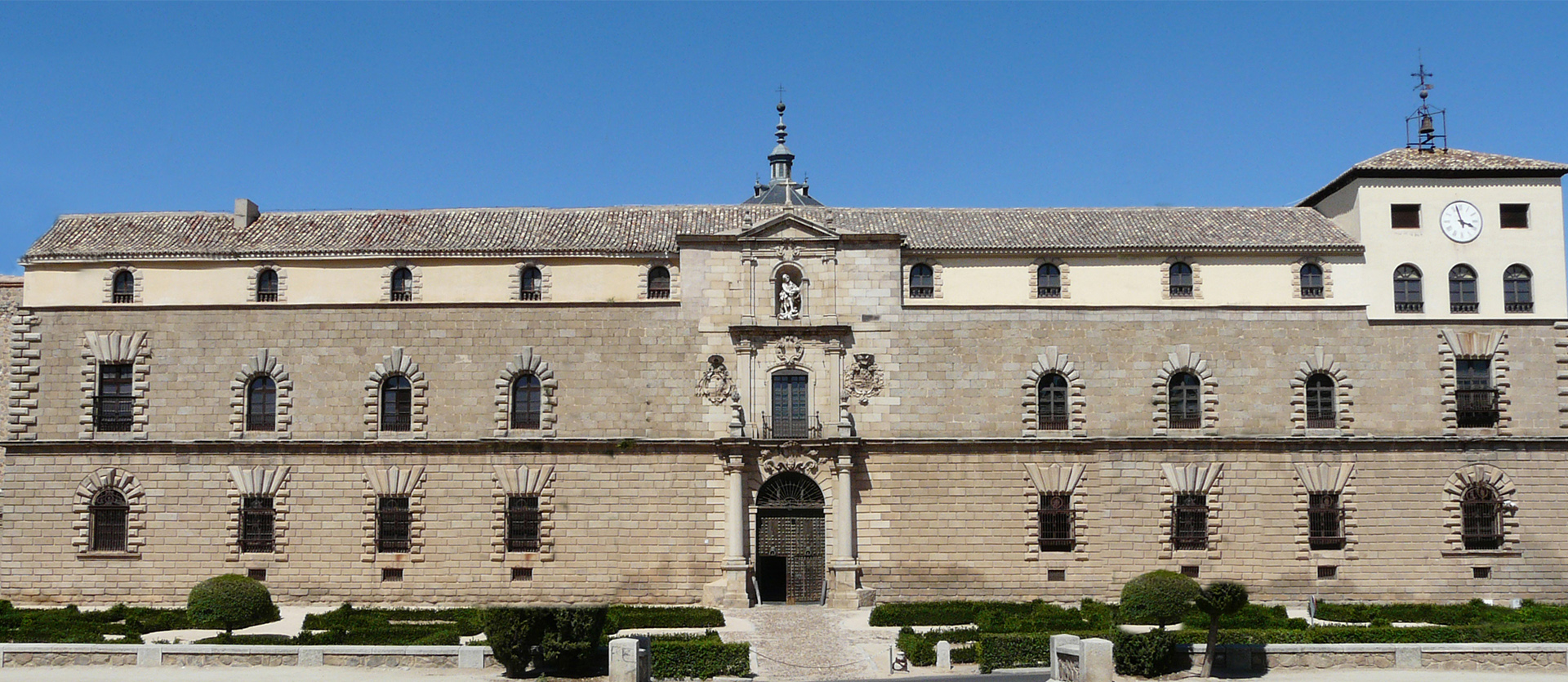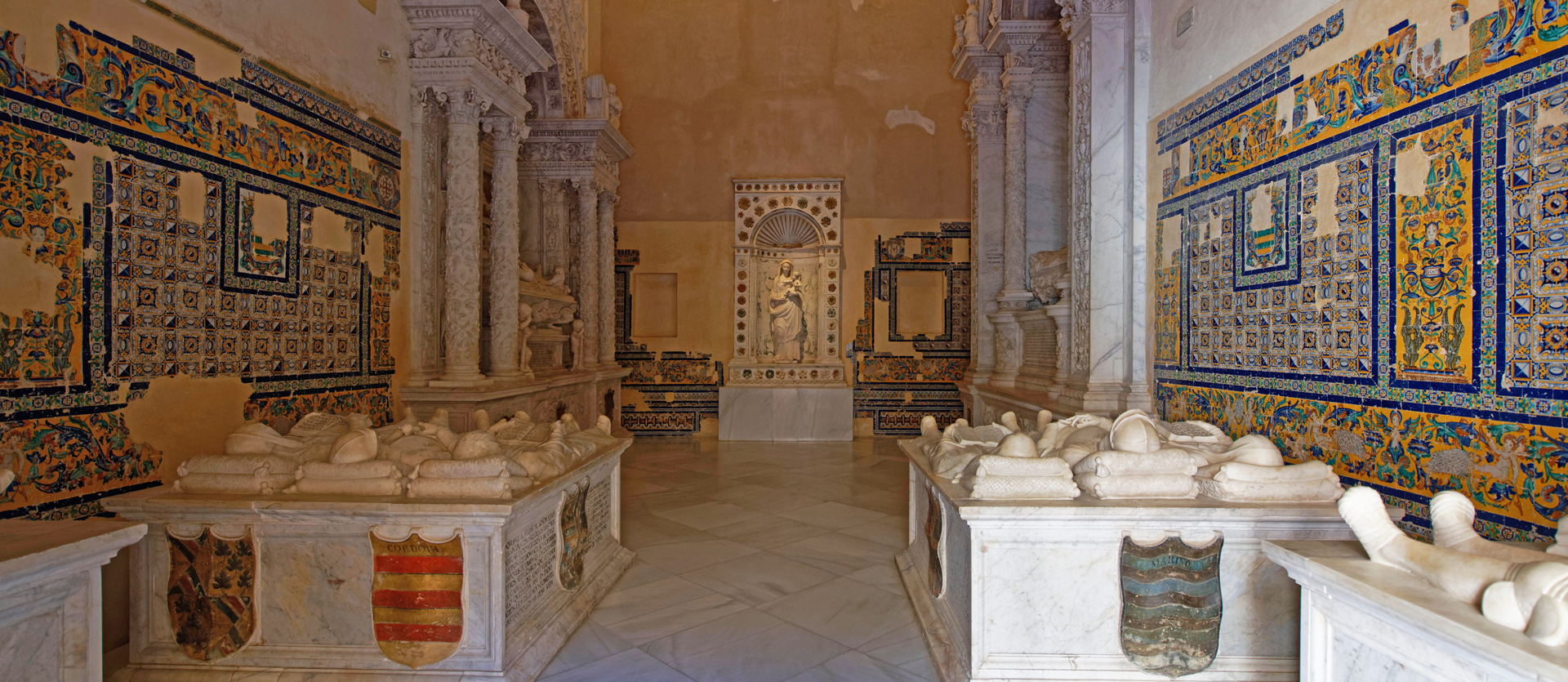Other intangible heritage
Its link to monuments
The Brotherhood of St. Stephen and the House of Pilate
The historical links of the Casa de Pilatos with the church of San Esteban and with the brotherhood of the same name, which has had its canonical seat there since its creation, date back to very early times. In the case of the former, at least as far back as 1524, the year in which Pope Clement VII granted the creation of a chaplaincy in the church of the protomartyr to be paid for by the 1st Marquis of Tarifa. His successors, the Dukes of Alcalá, acquired the right to a tribune, for which a passageway was built to connect the palace with the nave of the Epistle, so that they could attend services from the choir loft without having to step into the street. In the case of the latter, the link goes back to the very act of foundation, as is shown by the fact that one of its titulars was San Juan de Ribera, patriarch of Valencia and son of the 1st Duke of Alcalá, whose image presides over the entrance door to the Sacramental Chapel.
This historical link is made visible every year on Holy Tuesday, the day on which this brotherhood of San EstebanIn the stables of the palace, the costaleros of both floats form up and, in the courtyard of the halt, some of the Nazarenes who join the procession from there. Lastly, the paso of Nuestro Padre Jesús de la Salud y Buen Viaje (Our Father Jesus of Health and Good Journey)incorporates each year the Lignum Crucis which is preserved in the chapel of the Casa de Pilatos, known as the Chapel of the Flagellation, a holy wood that was part of the breastplate of the Great Cardinal Mendoza, uncle of Catalina de Ribera (J. González Moreno, 1992, p.130).
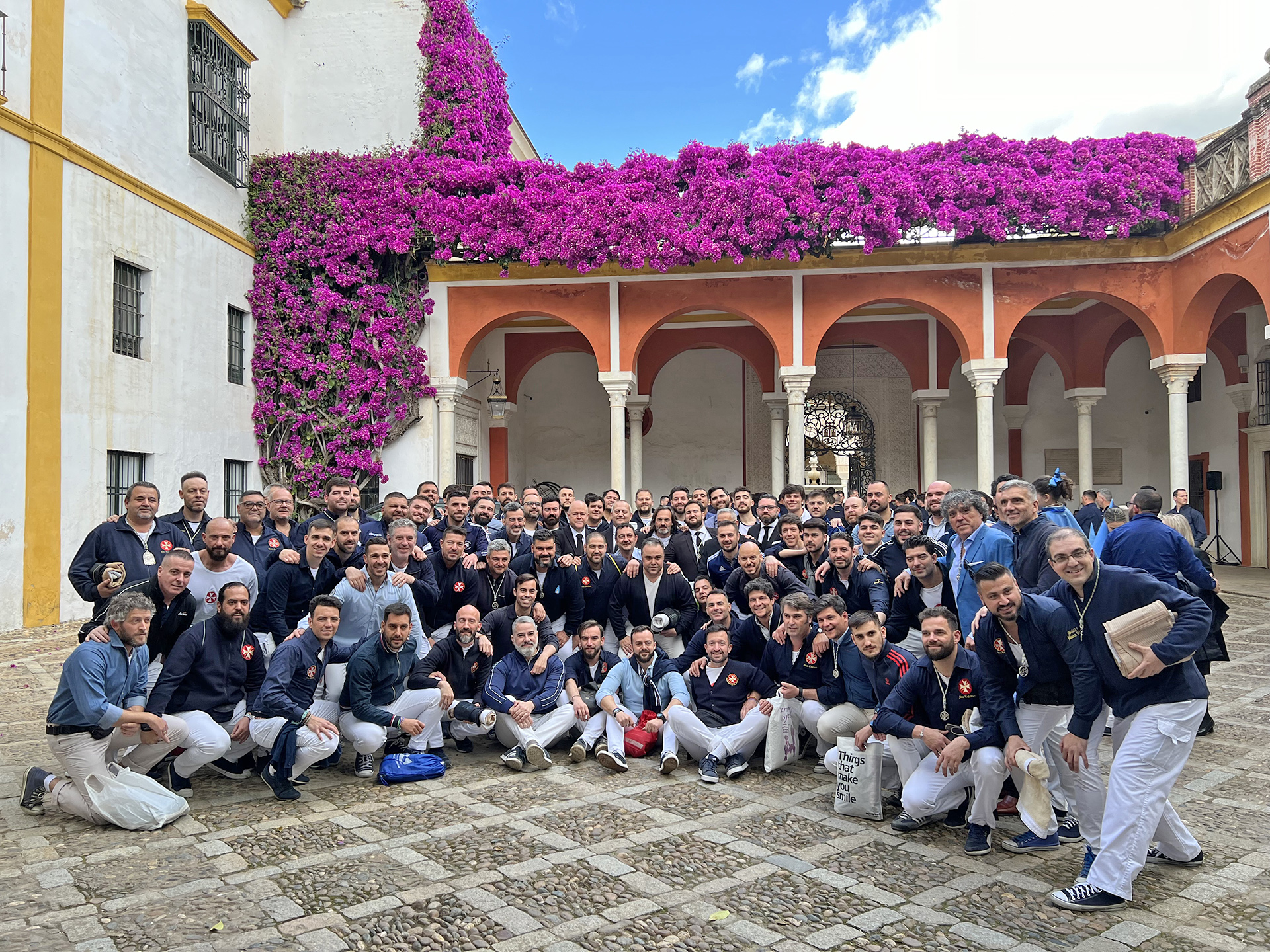
The costaleros of both floats of the Brotherhood of San Esteban in Seville train every Holy Tuesday in the Casa de Pilatos.

The Lignum Crucis, which is kept in the Chapel of the Flagellation in the Casa de Pilatos, leaves the chapel every Holy Week for the procession of Nuestro Padre Jesús de la Salud y Buen Viaje (Our Father Jesus of Health and Good Journey) of the brotherhood of San Esteban.
In the days leading up to Easter Week, the Brotherhood of San Esteban organises a workshop on curly palms in the "Caballerizas" room of the Casa de Pilatos, the original "chamber of wonders" of the 1st Marquis of Tarifa, with the aim of transmitting knowledge of this technique in order to keep alive a tradition that adorns and embellishes the balconies of Seville.
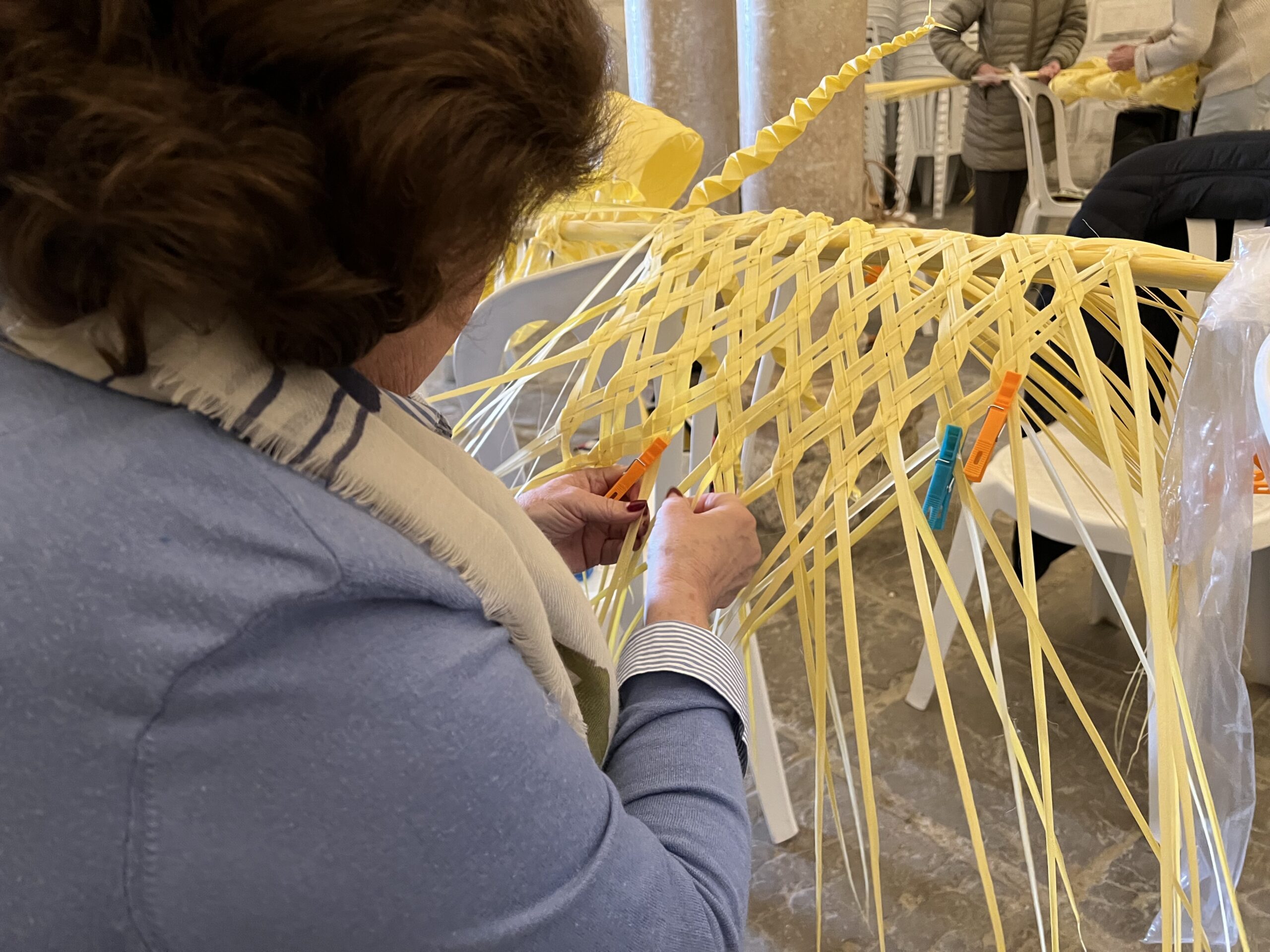
Curly palm workshop held in the Casa de Pilatos in the days leading up to Holy Week.
Celebration of the festivities of Saint Anthony of Padua and the Sacred Heart in the Pazo de Oca.
The chapel of San Antonio del Pazo de OcaIn addition to celebrating the Sunday mass and those of the first Fridays of each month, it celebrates with solemnity each year the feast days of Saint Anthony of Padua - traditionally on the Saturday immediately following the 13th June, in an event organised by the festival committee of the village of A Praza and that of the Sacred Heart in a traditional event organised by the Foundation on the last Sunday of August as a continuation of what was instituted by the Marquises of San Miguel das Penas at the end of the 19th century. The event begins with a solemn mass in which the Pazo de Oca choral group participates, followed by a procession carrying three of the saints that are kept in the chapel, preceded by the banner of the Sacred Heart of Jesus.

Procession of the Sacred Heart in the Pazo de Oca on the feast celebrated on the last Sunday in August.
Procession of palms and bouquets at the Hospital Tavera de Toledo
For several decades now, the parish church of Santiago el Mayor in Toledo, located in the so-called Arrabal neighbourhood, next to the Bisagra Gate, to which the Hospital Tavera belongs, has organised the procession every Palm Sunday commemorating the messianic entry of Jesus into Jerusalem. The procession starts at the Herrerian church of the Hospital, crosses the central gallery of its orthodoxly Renaissance courtyards, passes along the Paseo de Merchán and ends at the most imposing Mudejar complex in Toledo, the church of Santiago del Arrabal, where solemn mass is celebrated. The faithful who attend zealously keep the palms or olive branches, which have been blessed and carried in the procession as a testimony of their faith, in their homes or at their place of work.

Palm procession that leaves the Tavera Hospital every Palm Sunday for the parish church of Santiago el Mayor.
Visits to Jesús de Medinaceli in the Casa de Pilatos in Seville.
Devotion in Seville to this invocation of Jesús Cautivo, Rescatado or de Medinaceli dates back to the beginning of the 18th century, with one of the first sculpted versions of the Jesús de Medinaceli from Madrid, an image that has been worshipped in the parish church of San Ildefonso since 1909, but which before that, from around 1700, was venerated in the convent of the Discalced Trinitarians of Nuestra Señora de Gracia. The devotion to the Christ of Medinaceli in the Casa de Pilatos was born linked to the Way of the Cross, at the express wish of the Duke of Medinaceli, Rafael de Medina y Vilallonga, who wished to have in his Sevillian palace a copy of the devout image of Jesus of Nazareth venerated in the Basilica of Madrid. The copy was commissioned in 1960 from the Sevillian sculptor Juan Abascal, and like his model, since then it has been exhibited for public veneration every Friday in March.
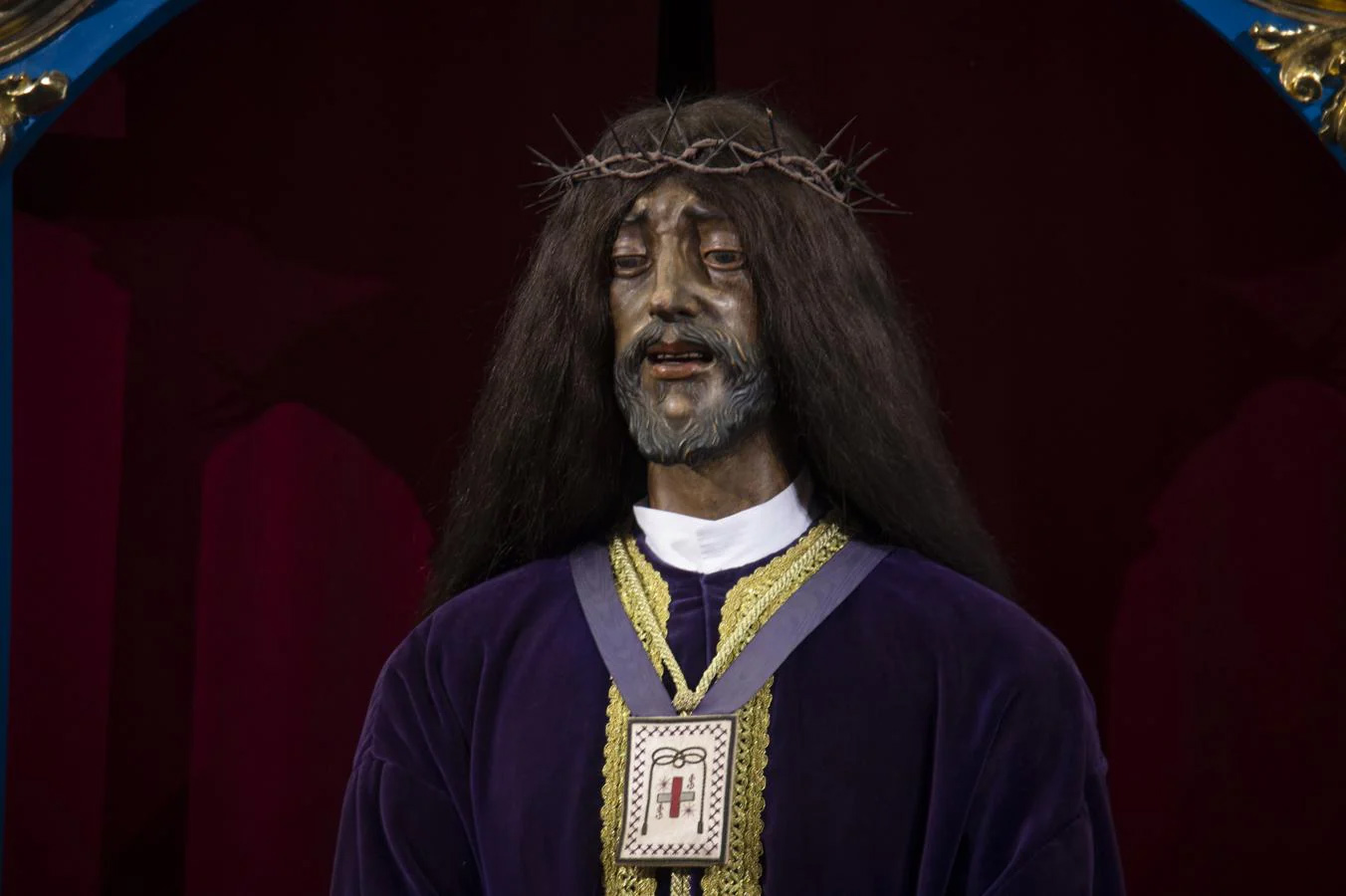
A Sevillian copy of N.P. Jesús de Medinaceli of Madrid which, like this one, is venerated in the Casa de Pilatos every Friday in March.
Masses in the Charterhouse of Santa María de las Cuevas in Seville.
Since 1993, the chapel of the chapter of the Sevillian Cartuja de Santa María de las Cuevas has once again housed the tombs of the Adelantados Mayores de Andalucía, which were joined by those of the House of Ribera that were originally in the church of this monastery. In memory of those buried there, masses are celebrated every year on the feast days of San Juan de Ribera (14th January), San Fernando (30th May), San Luis, King of France (25th August) and San Andrés (30th November), patrons and protectors of the Ducal House of Medinaceli (in the cases of San Fernando and San Luis) and of the House of Alcalá de los Gazules (in those of San Andrés and San Juan de Ribera).



